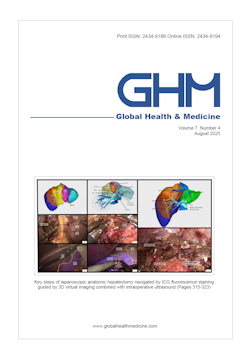Global Health & Medicine 2020;2(1):3-8.
Improved treatment capacity and quality of care: the effectiveness of the stroke prevention and treatment system in Shanghai, China from 2012-2017
Zhu BF, Chen D, Jin CL, Song PP, Li F
Because of the high mortality, recurrence, and rate of disability of stroke, a stroke prevention and treatment system was instituted in Shanghai in 2012; this system includes 11 municipal hospitals, 25 district hospitals, and 240 community health centers. Community health centers focus on early screening in the community, health management of high-risk individuals, and secondary prevention and rehabilitation of stroke patients. Residents' health profiles are utilized by community health centers to proactively identify the population at higher risk. District hospitals are responsible for screening for vascular lesions in high-risk individuals, including carotid artery and intracranial artery screening, and standardized treatment of stroke patients. Municipal hospitals concentrate on complex and emergency care for acute onset stroke. The system specifies care for all stages of stroke management. The development of the system has improved the capacity of and quality of care for stroke patients. The rate at which patients undergo intravenous thrombolysis and the percentage of patients with a door-to-needle time of less than 60 minutes have increased significantly. However, the primary and secondary prevention of stroke is insufficient, the stroke rehabilitation system is incomplete, and the quality of care in primary healthcare facilities is limited. An evaluation system and payment mechanisms are needed to incentivize healthcare personnel to fulfill their responsibilities and to ensure the system's operation.
DOI: 10.35772/ghm.2020.01006







